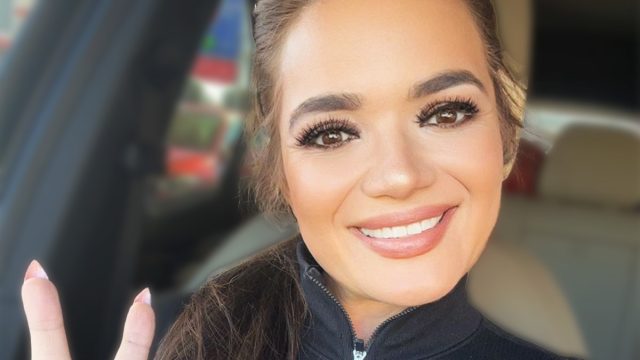8 Hidden Signs The Body Needs More Fiber, According to a Scientist
Most people know fiber is important, but few realize when their body is desperately signaling for more. Christine Hronec, founder and CEO of Gauge Girl Training, brings a unique perspective to this common nutritional gap. As a food scientist and chemical engineer who has helped thousands transform their health, she sees these warning signs daily in her practice. Here are the hidden signals your body might be sending—and the science-backed solutions you need.
The Science Behind Fiber: Beyond Just Bulk
"When we talk about dietary fiber, we are not talking about protein, carbs, or fat that are absorbed and digested by the body," Christine explains. Instead, she reveals its crucial role: "Fiber is important in balancing hormones, helping with gut health, supporting proper digestion, and helping lower cholesterol among many other functional purposes in keeping the body balanced and optimal."
RELATED: Woman Lost 72 Pounds in 6 Months with Semaglutide, "I'm Ready to Date Again!"
Irregular Digestion: The Most Obvious Signal
"Constipation is one of the number one signs you are not getting enough fiber," Christine states firmly. She explains how fiber works like "the bristles of a broom," cleansing your digestive tract while absorbing water to ease elimination.
The solution is simple but requires careful attention: "You can make simple shifts by adding oatmeal to your breakfast. You can add flax to it, chia seeds, you can add some fiber to your smoothies." However, she warns, "When you increase your fiber intake, you also have to increase your water intake. If you just boost your fiber without increasing your water, you're going to have all kinds of problems."
Quick-Return Hunger After Meals
Finding yourself hungry shortly after meals? "Fiber helps to slow down your hunger signals," Christine explains. She elaborates on this mechanism: "Even though you are eating very high calorie foods, you can feel very empty. Getting lots of vegetables, high fiber things that are going to take up the full volume of the gut is going to have a drastically different role in your sense of fullness after meals."
Elevated Cholesterol Levels
One of the most significant hidden signs comes from your bloodwork. "Fiber helps to absorb the particles that cause high cholesterol before they can clog the arteries," Christine reveals. The science backs this up: "For every seven grams of fiber you eat daily, it actually lowers your risk of having heart disease by 9% according to 22 separate studies that have been reviewed by the British Medical Journal."
RELATED: 10 Protein Tricks for Burning Fat You'll Love, From a Nutritionist
Digestive Discomfort and Strain
Christine points out that hemorrhoids often indicate insufficient fiber intake. "Fiber helps to soften the stools, increase stool volume, and reduces the residence time in the tract," she explains. This natural process helps prevent straining and the associated complications.
Unstable Energy Levels
"If you constantly find yourself feeling very tired, sluggish, almost sleepy and just very low energy, insufficient fiber is probably one reason," Christine notes. She explains the connection: "What ends up happening is the spikes and the dips that you experience after meals are going to be more regulated. The rise and fall is not going to be as sharp, and as a result, you're going to have much better energy."
Stubborn Weight Issues
Weight management struggles might signal a fiber deficit. "Not only does fiber make it a little bit easier to lose weight because it allows you to feel fuller on lower calorie foods," Christine explains, "but fiber is also excellent at allowing the body to detox excess estrogens." This dual action supports both calorie control and hormone balance.
Hormone Imbalances
The final hidden sign relates to hormone health. Christine emphasizes that fiber plays a crucial role in hormone balance: "It can cause hormone imbalances that can lead to weight gain" when insufficient. The solution lies in gradually increasing fiber intake while maintaining proper hydration.
RELATED: 10 Hacks to Burn More Fat While Walking, According to Scientist
Making the Change: Smart Steps Forward
Start with simple additions to your daily routine: incorporate chia seeds into morning smoothies, choose whole grain options, and add more vegetables to each meal. Remember Christine's essential advice: increase water intake alongside fiber to support proper digestion and prevent discomfort. These small changes can lead to significant improvements in how your body feels and functions. And if you enjoyed this article, take advantage of these 15 Quick Ways to Lose Body Fat Percentage in a Week.





